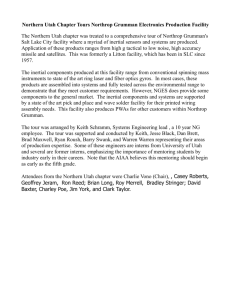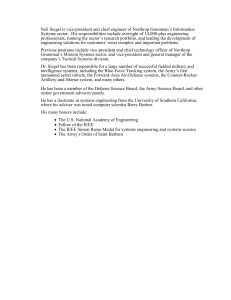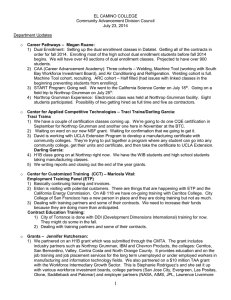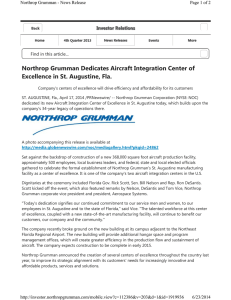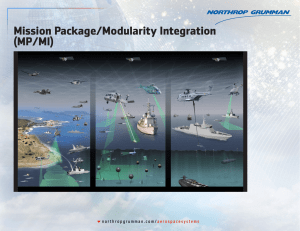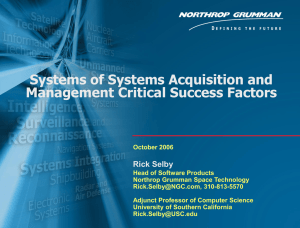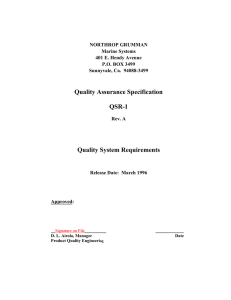Critical Success Factors for system-of-system architecture / engineering
advertisement
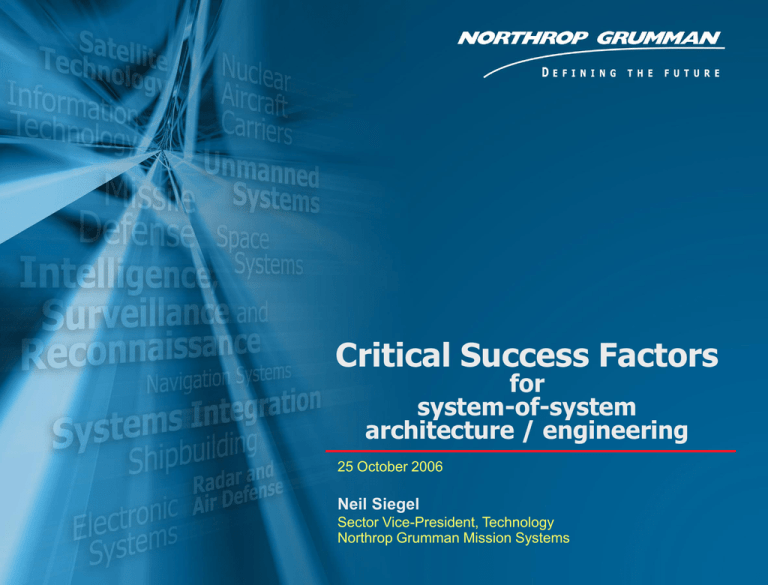
Critical Success Factors for system-of-system architecture / engineering 25 October 2006 Neil Siegel Sector Vice-President, Technology Northrop Grumman Mission Systems 0 Copyright 2005 Northrop Grumman Corporation SoS design basics – one person’s view Understand the work-flow and dynamic behavior of the system “Long mission threads” Simultaneous operations Capacity Port-to-port timing Etc. Separate the implementation of the structure from the implementation of the “meat” Exercise the structure at scale early and often Design for allowed / unallowed dynamic behavior “DC timing diagram” analogy Establishing boundaries and linkages Tight versus loose coupling Where to use each A small number of abstractions (“views”) are helpful. Science + engineering + art. Simplicity is a virtue. 1 Copyright 2005 Northrop Grumman Corporation Fitting the work to the distribution of skills in a real team Implementation can vary significantly in complexity In any large team, skill level across the team will vary significantly Matching significantly improves the likelihood of a desirable outcome Specific, tangible design steps to partition the design into “zones of pre-determined implementation complexity” 2 Copyright 2005 Northrop Grumman Corporation Design for quality factors We are better as an industry at designing for highlyvisible factors (e.g., functionality) than for underlying quality attributes (e.g., MTBF) Real-world practice seems to result in a huge variance in achieved quality Probably an indication of an immature state-of-practice across our industry Not clear if the underlying cause is lack of skill or lack of focus A big killer of programs! 3 Copyright 2005 Northrop Grumman Corporation Accept the limitations of our intuition The relationship between improvement in a technical factor and improvement in observed system performance is not always obvious Yet we all too often depend on intuition, or make use of hidden assumptions that do the same thing Link technical predictors to operational predictors 4 Copyright 2005 Northrop Grumman Corporation Integrating people into the system’s business process Building successful system-of-systems is a process that must include a business-processreengineering aspect Understand the sociology of your user community, not just what they say Perform a careful partitioning of what the human can do best, and what the computer can do best Effective and credible Don’t ask the human for data the computer can figure out Support the stressed user Crossing security domains 5 Copyright 2005 Northrop Grumman Corporation Summary At system-of-systems scale, things sometimes scale badly / non-intuitively Unplanned dynamic behavior is the source of many of the hard problems Not all people are equally skilled, so designs that are based on a tacit assumption that they are all equally skilled are risky The large dynamic range of quality outcomes is a sign of immature state-of-practice Informing the system-of-systems design through domain knowledge seems essential 6 Copyright 2005 Northrop Grumman Corporation

